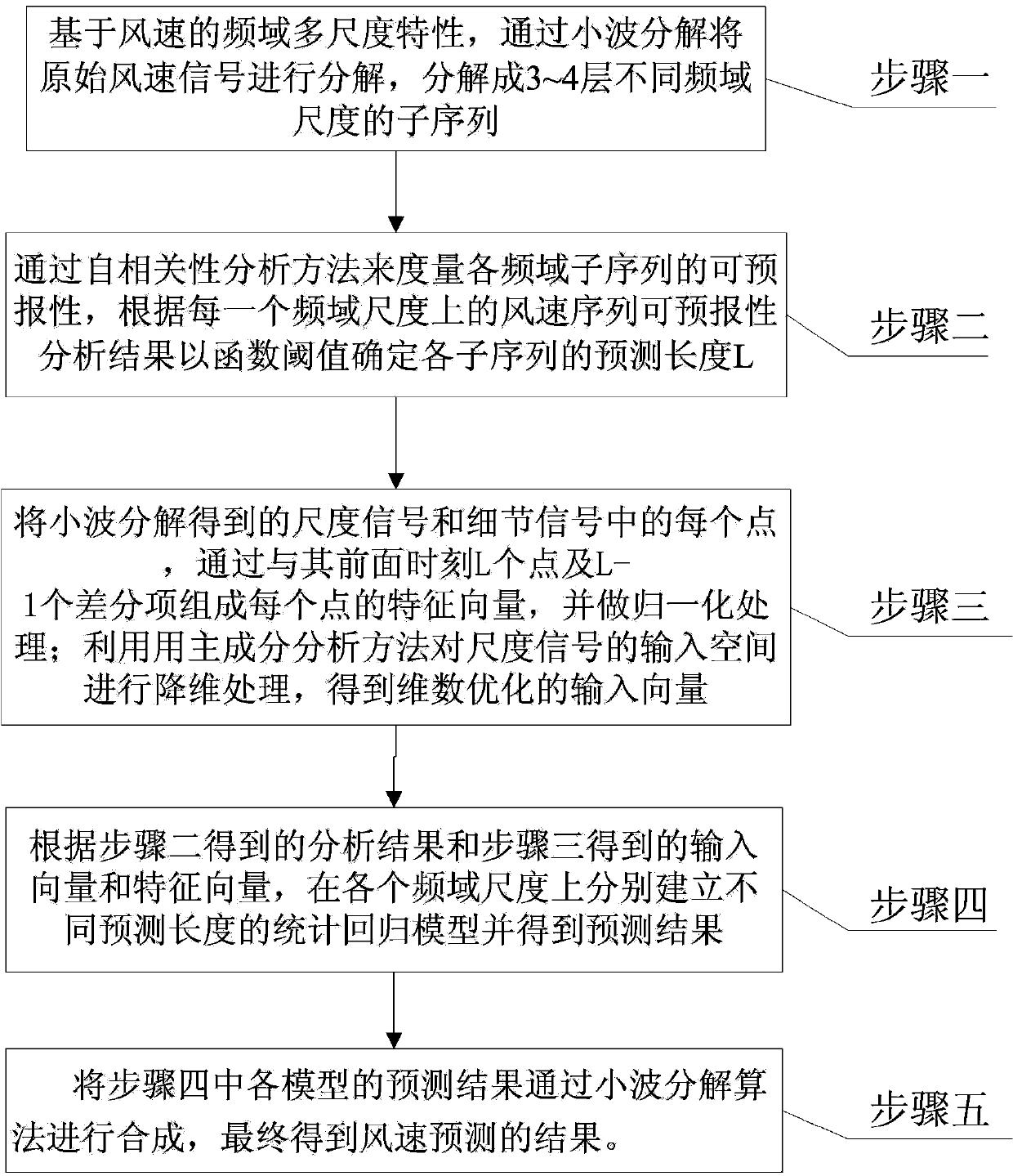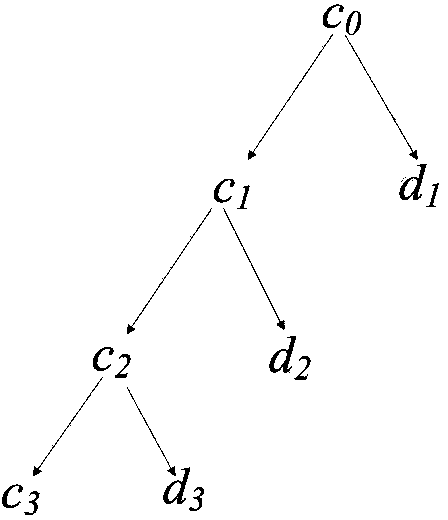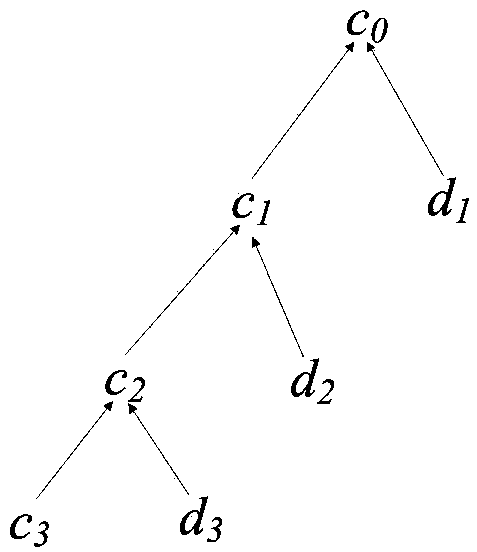Ultrashort-period wind speed prediction method based on frequency-domain multi-scale wind speed signal predictability
A wind speed prediction, multi-scale technology, applied in special data processing applications, instruments, electrical digital data processing, etc., can solve the problems of low forecast accuracy, hidden dangers of wind farm operation safety, long model training time, etc., to shorten the training time, The effect of reducing hidden dangers and improving power prediction accuracy
- Summary
- Abstract
- Description
- Claims
- Application Information
AI Technical Summary
Problems solved by technology
Method used
Image
Examples
specific Embodiment approach 1
[0022] Specific implementation mode 1: In this implementation mode, the wind speed prediction method based on the predictability of multi-scale wind speed signals in the frequency domain, the specific steps are as follows (such as figure 1 shown):
[0023] Step 1: Based on the frequency-domain multi-scale characteristics of wind speed, the original wind speed signal (such as Figure 4 shown) for decomposition (as in figure 2 shown), decomposed into subsequences of 3 to 4 layers of different frequency domain scales;
[0024] Step 2: Measure the predictability of each frequency domain subsequence by autocorrelation analysis method, and determine the prediction length L of each subsequence according to the predictability analysis results of the wind speed sequence on each frequency domain scale with a function threshold;
[0025] Step 3: For each point in the scale signal and detail signal obtained by wavelet decomposition, the feature vector of each point is composed of L poi...
specific Embodiment approach 2
[0028] Specific embodiment two: the difference between the wind speed prediction method based on frequency domain multi-scale wind speed signal predictability in this embodiment and specific embodiment one is: the specific method of wavelet decomposition in step one is: Mallat uses pyramid algorithm, combines multiple Resolution analysis, pyramidal wavelet decomposition algorithm.
[0029] The signal f(t) is in the scale space V j and the wavelet space W j The projection of
[0030]
[0031] d j,k =j,k (t)>, by get
[0032]
[0033] From the double-scale equation of the scaling function, we can get
[0034]
[0035] From the orthogonality of the scaling function, we can get
[0036]
[0037] From the double-scale equation of wavelet function, we can get
[0038]
[0039] Combine the above three equations to get:
[0040] c j + 1 , n ...
specific Embodiment approach 3
[0044] Embodiment 3: The wind speed prediction method based on the predictability of multi-scale wind speed signals in the frequency domain in this embodiment differs from Embodiment 1 in that the autocorrelation analysis method in step 2 is specifically:
[0045]Metric wind speed time series collection {x t} t=1:n x in t Instead of delaying samples x by k steps t+k The autocorrelation coefficient of is defined as the sample covariance γ(k), namely:
[0046] γ ( k ) = Cov ( x t , x t + k ) = Σ t = 1 n - k ...
PUM
 Login to View More
Login to View More Abstract
Description
Claims
Application Information
 Login to View More
Login to View More - R&D
- Intellectual Property
- Life Sciences
- Materials
- Tech Scout
- Unparalleled Data Quality
- Higher Quality Content
- 60% Fewer Hallucinations
Browse by: Latest US Patents, China's latest patents, Technical Efficacy Thesaurus, Application Domain, Technology Topic, Popular Technical Reports.
© 2025 PatSnap. All rights reserved.Legal|Privacy policy|Modern Slavery Act Transparency Statement|Sitemap|About US| Contact US: help@patsnap.com



